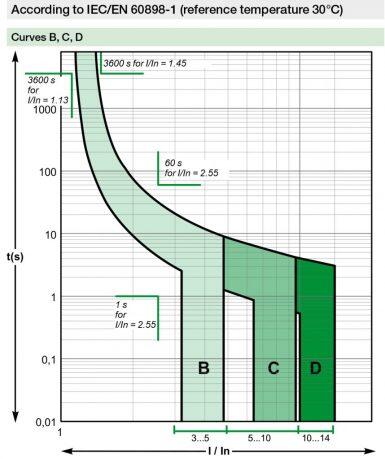MCBs are compact electromechanical devices designed to protect electrical circuits from damage caused by overcurrents, such as overloads and short circuits. MCBs are a more advanced and reliable alternative to traditional fuses, which need to be replaced after a single operation.
How MCBs Work?
MCBs function by monitoring the current flowing through a circuit. When the current exceeds a predetermined threshold, the MCB’s internal mechanism trips, disconnecting the circuit and stopping the flow of electricity. This rapid disconnection helps prevent damage to electrical equipment, wiring, and most importantly, reduces the risk of fire or electrocution.
Warranting reliability and safety for people and assets, MCBs are equipped with two tripping mechanisms: the delayed thermal tripping mechanism for overload protection and the magnetic tripping mechanism for short circuit protection.
Types of Miniature Circuit Breakers (MCB)
MCBs are available in various types, differentiated primarily by their tripping characteristics. The most common types of MCBs include:

Type B (Curve B) MCBs
Type B MCBs are designed to trip at a current level of 3-5 times their rated current. They are commonly used in residential and light commercial applications, where low levels of inrush current are expected, such as lighting circuits and small appliances.
Type C (Curve C) MCBs
Type C MCBs trip at a current level of 5-10 times their rated current, making them suitable for commercial and industrial applications with moderate inrush currents, such as motors and transformers.
Type D (Curve D) MCBs
Type D MCBs are designed to handle high inrush currents, tripping at 10-20 times their rated current. These MCBs are ideal for heavy industrial applications with large motors, transformers, and other inductive loads.